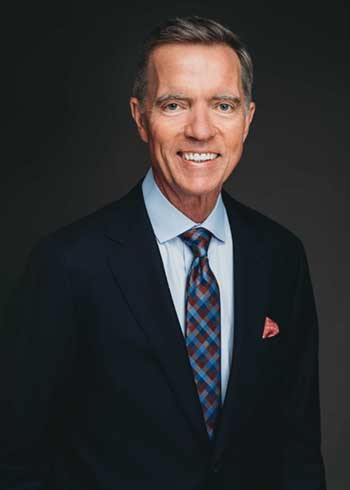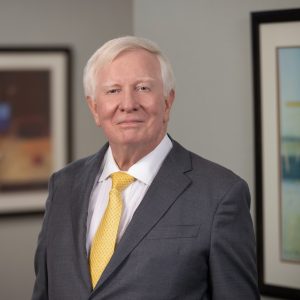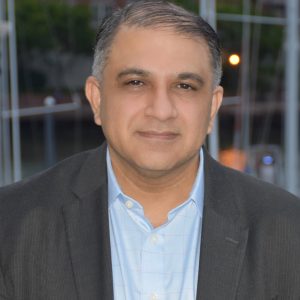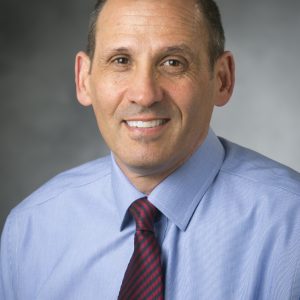Orthotic Holdings CEO: How to Strengthen a Life Sciences Platform Company During COVID-19

 Paul Joyce, CEO
Paul Joyce, CEO
Orthotic Holdings Inc.
Before he accepted the CEO position at Orthotic Holdings Inc. (OHI), Paul Joyce had no idea he was using an orthotic device made by the company. Finding out that fact during the recruitment process helped him decide to jump in with both feet.
Headquartered in Mesa, AZ, OHI is a global, private equity-owned platform company in the life sciences space that provides custom foot and ankle orthotics and medical footwear for podiatrists, chiropractors, orthotics, and prosthetics clinics, physiotherapists, and pedorthic retailers. In an interview with Ashton Tweed, Mr. Joyce explains how a platform company works, the decisions he made to keep the organization going during the COVID-19 pandemic, and his personal experience with plantar fasciitis.
Ashton Tweed: OHI is a private equity-owned platform company. How does a platform company work?
Paul Joyce: A platform company is a group of companies pulled together in a way that allows the strengths of each of the companies to be leveraged. Think of it as building a house, with the initial companies serving as the foundation and additional acquisitions being the floors of the house. The platform company gains incremental value with each acquisition because it leverages the strengths built into the initial platform.
AT: What are your priorities as the CEO of a platform company?
PJ: My priority right now—just like with any private equity firm—is to create growth. I’m focused on creating growth, both by strengthening the platform as well as by increasing sales of the various products that we’ve acquired into other customer bases. My biggest priority is creating growth within the business for three constituents: Employees, customers, and company ownership.
AT: What are your biggest challenges in creating growth?
PJ: Right now, the principal challenge we have as a company is helping our customers recover from the impact of COVID-19. Many practices still report patient traffic is down and almost all of our customers are dealing with some level of staff turnover. Practices also have clinicians who are burned out from all of the challenges of providing care to patients during the pandemic.
All of our products are customized to the patient. That’s very true for our orthotics as well as our medical footwear. One of the unique things about medical footwear is the variety of widths and sizes plus we provide custom diabetic inserts that go into the patients’ shoes. Providing these products to patients requires a certain level of staff training within our customer groups and turnover has made that a significant challenge. Our sales, marketing, and clinical personnel are helping our customers with this training. OHI itself faces a similar challenge. We’ve had to restaff or retrain employees in many areas during the pandemic. So we’re helping both our customers as well as ourselves bounce back from some of the headwinds caused by COVID-19.
At the same time, our connectivity as a company has certainly been challenged during COVID. We implemented a temporary furlough of personnel and experienced staff turnover during the pandemic. We also put in place a permanent work-from-home policy, which has turned out to be great. But there’s a lot of work to be done to keep employees connected and maintain our company culture.
In your article posted on Linkedin earlier this year titled “5 Must-Do’s When Building a Platform Company: A CEO’s Perspective,” you stress the importance of a platform company’s culture, particularly in light of the ongoing acquisition of target companies. How does OHI promote and reinforce its culture?
PJ: We’re doing a lot of work to maintain the company’s culture and strengthen connections among employees. We’ve been training our supervisory staff to hold informal, social online gatherings on Fridays and break-out time so folks can interact and talk like we used to do traditionally around a water cooler. We provide training for employees, particularly new employees, around company culture and expectations.
One of the things that really attracts folks to OHI and keeps people energized is our purpose—to help people around the world walk safely and comfortably. Many of our products have life-changing impacts on peoples’ lives in terms of mobility. So I’ve used my position as the leader of the company to get that message across.
AT: What has been your best decision for OHI so far?
PJ: I think the implementation of something we call a Business Renewal Strategy is the best decision I’ve made since I came to OHI. In 2020, we had significant declines in business. We decided to implement several strategic moves to accelerate changes needed to strengthen the platform to support future growth. Making those changes while customer activity was lower allowed us to focus on building a stronger OHI for when customers returned.
AT: What business renewal changes did you make?
PJ: First, we invested in a centralized call center. Prior to COVID-19, we had six different groups that handled customer calls for individual businesses. We merged those into one centralized call center. There are still sub-teams, but they’re managed as part of an overall team.
We also made significant investments in hiring for our sales and marketing functions to improve our ability to sell OHI’s diverse product offerings to our large customer base. Finally, we’re in the process of upgrading our information technology systems across the company, which hasn’t been done since the company was founded. The result will be one uniform IT platform that will make it easier for our customers to do business with OHI.
We could have waited until the pandemic passed, but that would just delay making OHI better for our customers. There were some missteps and challenges in trying to do all that in the middle of a pandemic, but I firmly believe it was the right decision and it made us a better company.
AT: You were recruited to join OHI. Why did you accept the position?
PJ: One thing about OHI that appealed to me was that I’m actually a beneficiary of OHI through my podiatrist because I received custom foot orthotics for plantar fasciitis made by an OHI brand. I found that out during the recruitment process conducted by Frazier Healthcare Partners, the private equity firm that owns OHI.
The company provides custom devices and footwear to 600,000 patients a year and it has a physician network of almost 10,000 physicians around the world. So the opportunity to put together safe and comfortable mobility solutions for ailments—some of which I experienced myself—was really, really appealing to me and was what ultimately brought me to the company.
And, my first week at OHI, I called my podiatrist and said “Hey, I’m now your supplier.” He said “Good. Now I know who to call if I ever have any issues.”
AT: Plantar fasciitis can be very painful.
PJ: Yes. I’m a runner and it really stopped me from running. It took me almost two years to finally get back to it. It usually doesn’t take that long but I admit I wasn’t the best at adhering to using the orthotic devices.
Paul Joyce joined Orthotic Holdings after holding numerous leadership roles in life sciences or medical technology companies. OHI has 425 employees in North America, Europe, and Australia. Prior to joining OHI, Paul was CEO and president of Optim LLC, a manufacturer of video and fiberoptic endoscopes. He was COO and partner of Medlink Imaging, a medical imaging systems supplier. Earlier, Mr. Joyce held roles with Hill-Rom, leading the company’s Global Equipment and Surgical businesses, and with Eastman Kodak-Health Imaging (now Carestream Health), where he led the North American Analog business. Prior to Eastman Kodak, he worked in finance with Pioneer Investments. Mr. Joyce earned an MBA in marketing and finance from the University of Rochester Simon School of Business and a B.S. in Finance from the University of Dayton.
Mr. Joyce and his wife, Fran, have three adult children—identical twin daughters and a son. He enjoys activities including exercising, golf, and meditation. Mr. Joyce is also looking forward to running again after recent surgery for Morton’s neuroma, a thickening of the tissue around nerves in the foot that leads to the toes.
Question for readers: How do you promote company culture at your organization?





